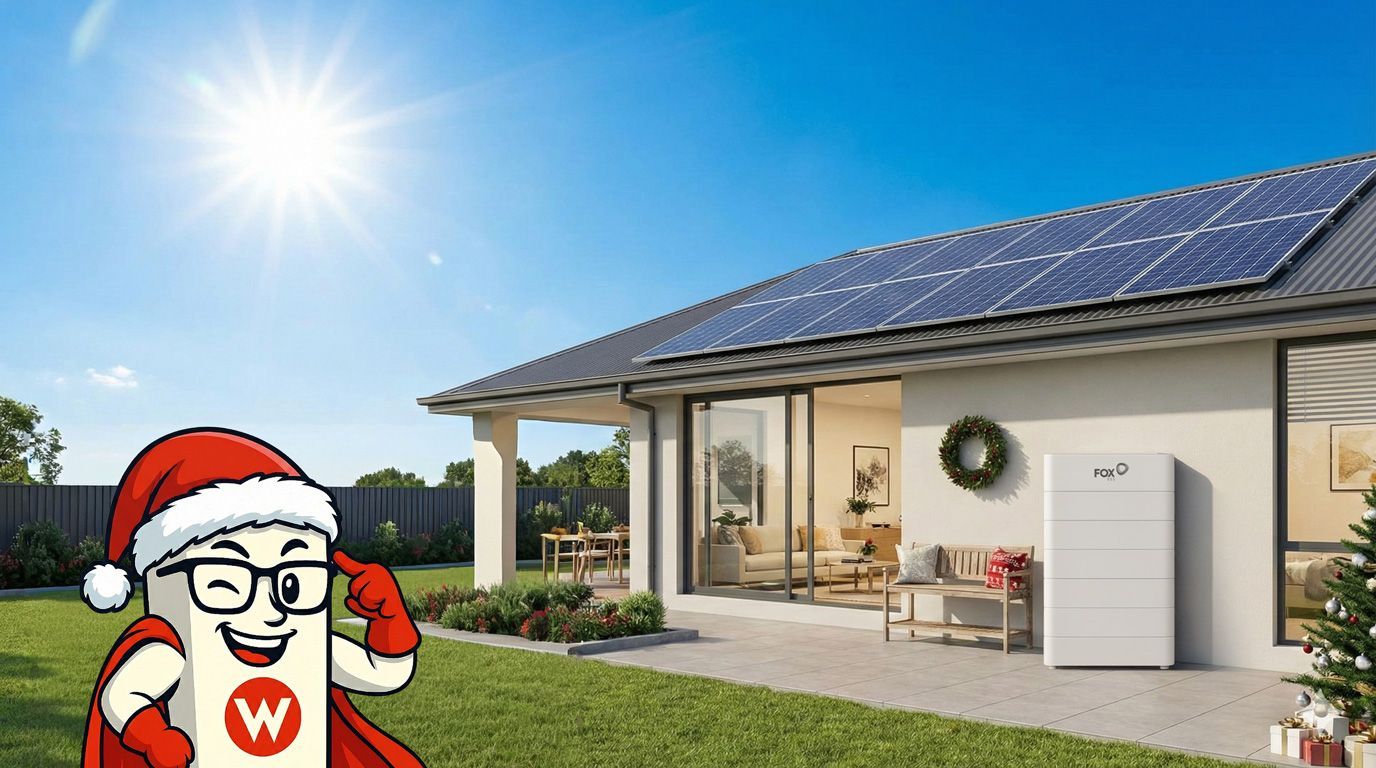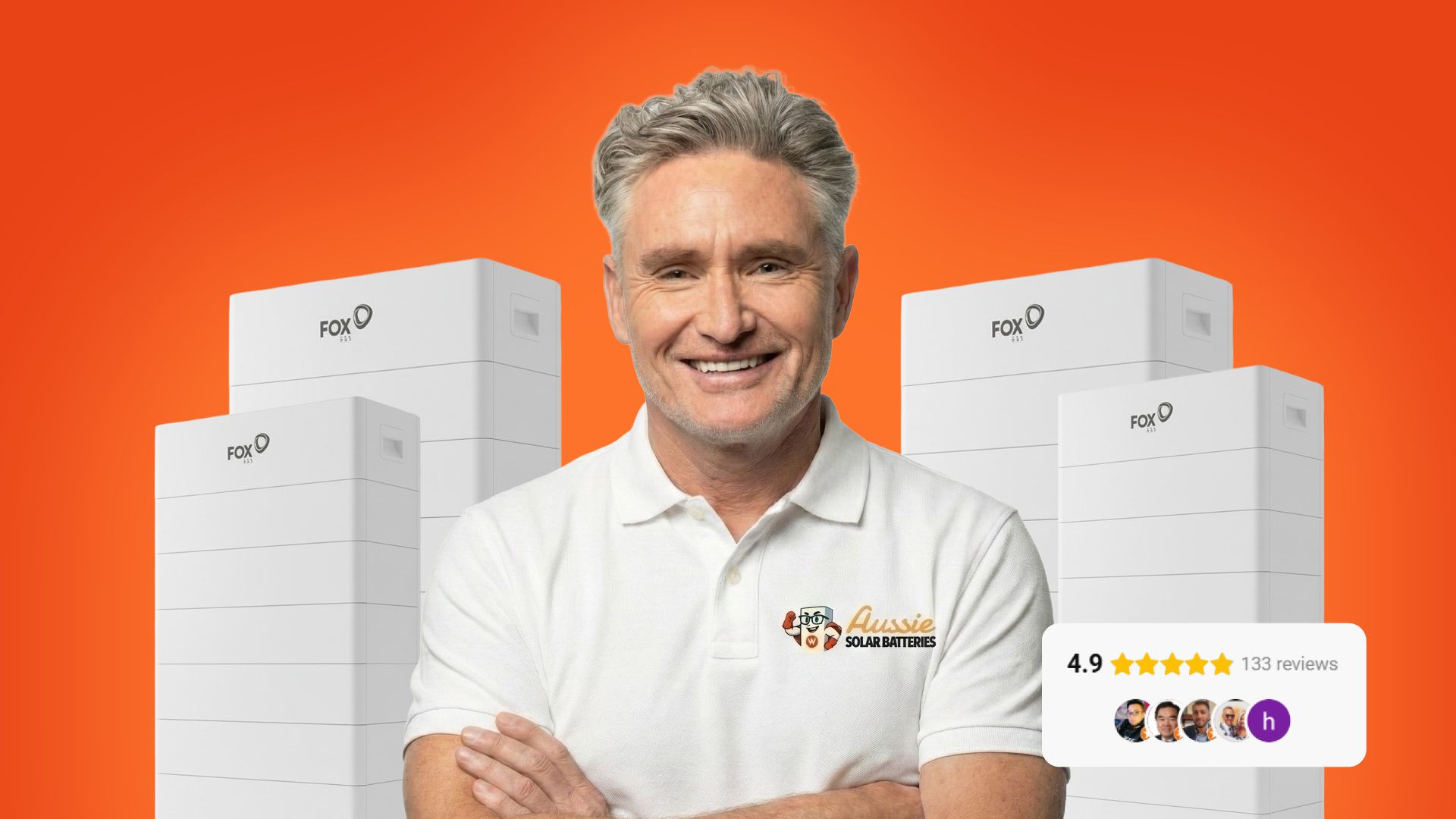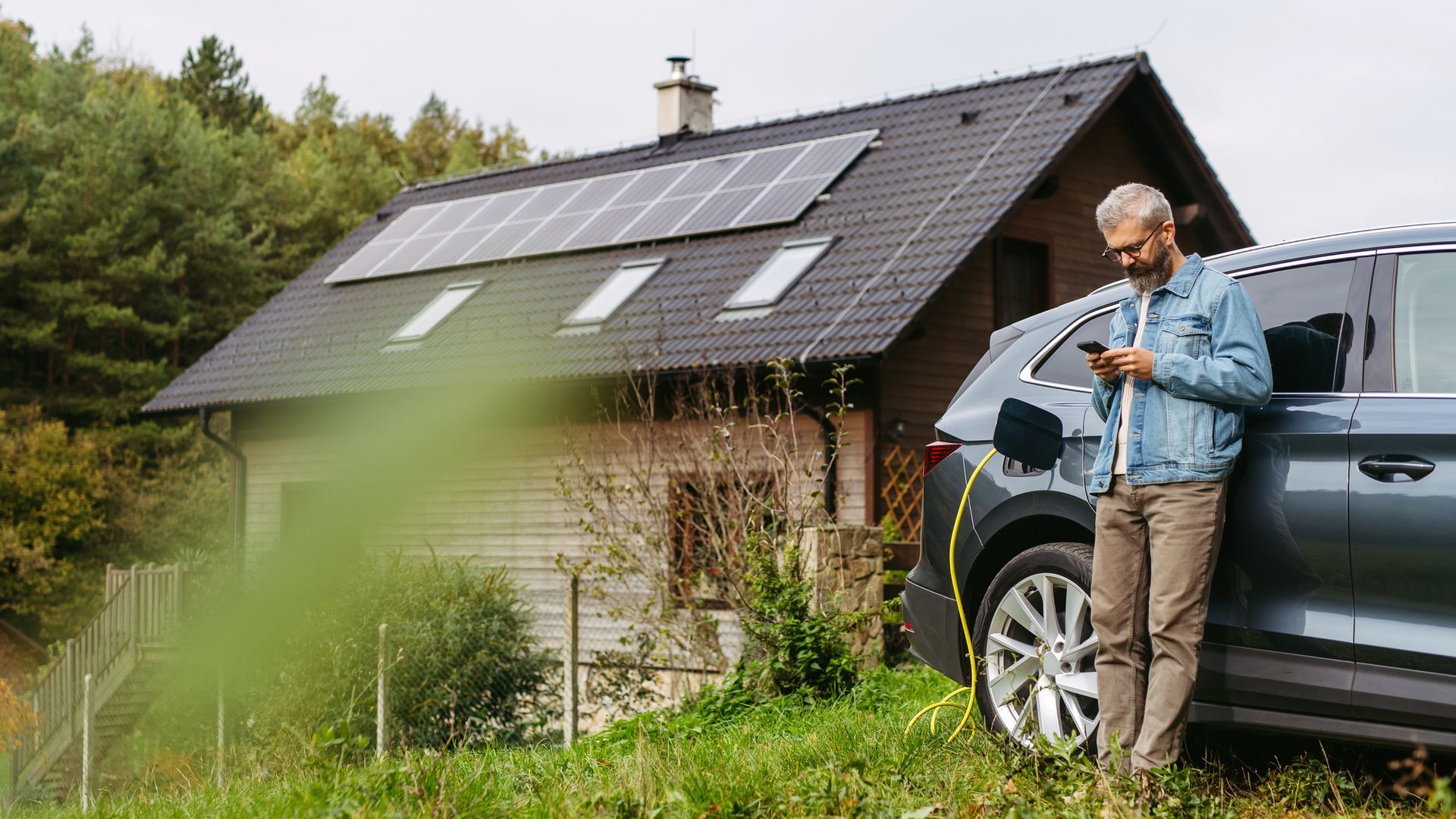NSW Solar Battery Rebate 2025: Full Guide to State & Federal Incentives
NSW Solar Battery Rebate & VPP Incentives 2025: Everything You Need to Know
The solar battery landscape in New South Wales underwent a major reset on 1 July 2025. For years, households could claim a flat state rebate on new batteries, but that program ended on 30 June 2025. In its place, the NSW Government has launched a new Virtual Power Plant (VPP) incentive, while the Federal Government rolled out the nationwide Cheaper Home Batteries Program.
These initiatives are designed to make solar storage more affordable and to encourage households to participate in stabilising the energy grid. Importantly, the way rebates are calculated has changed — and if you understand the details, you can maximise your savings.
The NSW Virtual Power Plant Incentive
The NSW VPP incentive rewards households that install batteries capable of joining a Virtual Power Plant — a network of solar batteries that share stored energy with the grid during times of peak demand. This helps prevent blackouts and smooth out electricity supply across the state.
From July 2025, eligible households and small businesses can receive up to $1,500 off when installing a VPP-ready battery. Unlike the previous state rebate, the VPP program is not just about cutting upfront costs; it also opens the door to ongoing bill credits or payments from your VPP provider.
To qualify, you must:
- Install a battery from the official approved product list
- Use a Clean Energy Council accredited installer
- Sign up with a participating VPP provider
This ensures the system is safe, reliable, and able to integrate into NSW’s growing distributed energy network.
The Federal Cheaper Home Batteries Program
The Federal Government’s Cheaper Home Batteries Program works differently from the NSW incentive. Instead of a flat dollar rebate, it uses a formula based on usable kilowatt-hours (kWh) of battery capacity.
For every kWh of usable storage, the program provides 9.3 small-scale technology certificates (STCs). Each STC is valued at the Clearing House price of $40, giving an effective rebate of about $372 per kWh. STCs are rounded down to the nearest whole number, and the rebate is capped at the first 50 kWh of usable capacity.
This means the bigger your battery, the larger your discount — up to the cap. For example:
- A 10 kWh battery earns 93 STCs (9.3 × 10), worth $3,720 off.
- A 13.5 kWh battery earns 125 STCs, worth $5,000 off.
- A 20 kWh battery earns 186 STCs, worth $7,440 off.
The rebate steps down each year:
- 2025: $372 per kWh
- 2026: $336 per kWh
- 2027: $296 per kWh
- 2028: $260 per kWh
- 2029: $224 per kWh
- 2030: $188 per kWh
Because installation costs vary, the actual percentage discount can be higher or lower than the government’s advertised “~30%”. For instance, if your installed cost is $1,000 per kWh, a $372 discount equals 37% off — well above the 30% target. If your installed cost is closer to $1,300 per kWh, the discount works out at around 28%.
This explains why many households in 2025 are seeing effective discounts closer to 35–37% off their battery installation, not just the “30%” figure often quoted in government announcements.
Stacking State and Federal Rebates
The real savings come when you combine both programs. NSW households can claim the federal Cheaper Home Batteries rebate and the state VPP incentive.
For example:
- A Sydney family installs a 13.5 kWh battery priced at $14,000. They receive $5,000 off from the federal program and $1,200 from the NSW VPP incentive, bringing their upfront cost down to $7,800.
- A small business in Newcastle installs a 20 kWh battery priced at $21,000. They claim $7,440 off federally plus $1,500 from NSW, reducing their cost to $12,060.
Both households then benefit from lower electricity bills and potential VPP credits, cutting their payback period to between 5 and 7 years.
Large-Capacity Batteries: Why Bigger Can Be Better
While many households install 10–13 kWh batteries to cover their evening usage, there is a growing trend towards larger batteries. For families with higher energy demands, electric vehicle charging, or small businesses with heavy daytime loads, a large-capacity system can provide more energy independence and even greater rebate savings.
At Aussie Solar Batteries, we supply systems as large as 42 kWh, starting from just $5,299. Under the federal rebate rules, a 42 kWh battery earns 390 STCs, which equates to a federal discount of $15,624 (42 × $372). Adding the NSW VPP incentive of up to $1,500 pushes the combined support to $17,124.
This makes large batteries one of the best value propositions in 2025. Even if the total installed price is $20,000–$25,000 after including inverters and installation, the rebates slash the net cost to under $8,000. With annual bill savings often exceeding $2,000, the payback period can be as short as 2-3 years — significantly faster than smaller systems.
Larger batteries also offer additional advantages:
- Whole-house coverage: A 42 kWh battery can comfortably run most households overnight and still have capacity for EV charging.
- Business efficiency: Commercial sites with peak energy demand can cut expensive grid usage dramatically.
- VPP strength: Larger batteries contribute more to VPP networks, which can mean greater bill credits or payouts for the owner.
How to Apply
The process is straightforward, and in most cases your installer handles the paperwork:
- Choose a VPP-capable battery from the approved product list.
- Get a quote from a Clean Energy Council accredited installer.
- Join a VPP provider in NSW to unlock the state incentive.
- The installer submits all claims, both rebates are applied as upfront discounts, so you pay the reduced price directly.
Key Considerations Before You Buy
- Usable vs nominal capacity: Rebates are calculated on usable capacity only. Always check your installer’s quote carefully.
- Warranty: Look for at least 10 years of coverage and guarantees around retained capacity.
- VPP flexibility: Some batteries are technically VPP-ready but only supported by certain providers. Check compatibility if you want the option to switch providers later.
- Rounding & admin fees: Because STCs are whole numbers, partial credits are lost. Some agents also deduct a small admin fee when processing your rebate.
Real-World Scenarios
Imagine a family of four in Sydney who installs a 10 kWh battery for $10,000. They claim $3,720 from the federal rebate and $1,000 from the NSW incentive, reducing their cost to $5,280. With bill savings of $1,000+ per year plus occasional VPP credits, the system pays itself back in around 5–6 years.
Now consider a small café in Wollongong that installs a 20 kWh battery for $21,000. They claim $7,440 federally and $1,500 from NSW, cutting their cost to $12,060. Because they use power during peak hours, the business reduces demand charges significantly and achieves a faster payback, closer to 4–5 years.
Finally, take a larger household or small business that installs a 42 kWh battery. With a combined rebate of $17,124, their effective system cost may fall below $8,000. This delivers one of the fastest paybacks available in the market, particularly for households running multiple appliances, EVs, and large solar arrays.
Looking Ahead
The federal rebate steps down every year until 2030, so batteries installed in 2025 receive the largest per-kWh discount. At the same time, the NSW VPP incentive may be revised as more households join the program. Acting in 2025 ensures you lock in the highest available support while electricity prices remain volatile and grid stability remains a priority.
Why Choose Aussie Solar Batteries
At Aussie Solar Batteries, we supply only VPP-ready, approved systems from Fox ESS and Each Energy — both eligible for the 2025 rebates. We are licensed across NSW, ACT, QLD, and SA, and our team handles the entire application process to make sure you don’t miss out on savings. With a showroom in Rosehill, NSW, you can see systems in person and get advice tailored to your household or business.
We also offer a free ROI calculator that factors in both the $372 per kWh federal rebate and the NSW VPP incentive, so you can see exactly how much you’ll save before committing.
Next Steps
If you are planning to install a solar battery in 2025, there has never been a better time. By stacking the federal Cheaper Home Batteries Program with the NSW VPP incentive, you can cut thousands off your installation cost and shorten your payback period dramatically.
Call
1800 975 270 today or request a free quote online. Mention “NSW Rebate 2025” and our team will fast-track your eligibility check and design a system that delivers maximum savings.
FAQs: NSW Solar Battery Rebate 2025
What is the NSW VPP incentive in 2025?
It’s a one-off payment (up to $1,500) for installing a VPP-capable battery and enrolling with a participating Virtual Power Plant in NSW. See the NSW program overview on the NSW Energy Saver – Peak Demand Reduction Scheme
Do I have to join a VPP to get the federal rebate?
No. The federal Cheaper Home Batteries Program is calculated on usable kWh and doesn’t require you to join a VPP.
How is the federal rebate calculated?
It’s based on the usable capacity of your battery (with certificates issued up to the first 50 kWh usable). Government guidance says it’s around 30% off the upfront cost, but the exact $ amount varies with STC settings and market value.
Why do some systems get more than 30% off?
If your installed cost per usable kWh is relatively low, the per-kWh support can equate to >30% as a percentage of price. If installed costs are higher, the % benefit is lower. (Mechanics still reference usable kWh and STC value.)
What’s the difference between usable and nominal capacity?
Usable kWh is the energy you can actually discharge; nominal is the nameplate figure. Federal support is based on usable kWh, so always confirm both in your quote.
Can I stack NSW and federal support?
Yes. NSW (VPP incentive) can be combined with the federal program for larger overall savings.
Are there size limits?
Yes. The federal program covers batteries between 5–100 kWh nominal, but only the first 50 kWh usable is counted for certificates.
Do STCs round down and are there admin fees?
Yes, certificates are issued as whole numbers (fractions are rounded down). Some agents deduct small admin fees when applying the discount.
What if I already have solar panels?
You can still add an eligible battery and claim the federal discount (and NSW VPP incentive if you join a VPP), provided the install meets program rules.
What happens if I sell my home?
The battery remains with the property; ownership of any ongoing VPP participation transfers per your provider’s terms.
When do the rebates change?
Federal support steps down each year to 2030. NSW program settings can also be updated. Always check the latest on the Clean Energy Regulator and NSW Energy Saver.




